The CONMEBOLCopa América, often simply called the Copa America, is the top men's quadrennial football tournament contested among national teams from South America. It is the oldest still-running continental football competition. The competition determines the champions of South America. Since the 1990s, teams from North America and Asia have also been invited to compete.

The CONCACAF Gold Cup is the main association football competition of the men's national football teams governed by CONCACAF, determining the continental champions of North America. The Gold Cup is held every two years. The tournament succeeded the CONCACAF Championship (1963–1989), with its inaugural edition being held in 1991.

The Oceania Football Confederation (OFC) is one of the six continental confederations of international association football. The OFC has 13 members, 11 of which are full members and two which are associate members not affiliated with FIFA. It promotes the game in Oceania and allows the member nations to qualify for the FIFA World Cup.
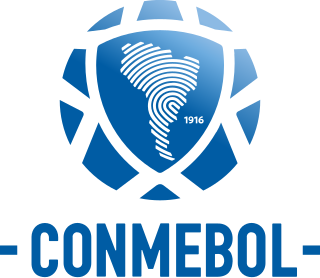
The South American Football Confederation is the continental governing body of football in South America and it is one of FIFA's six continental confederations. The oldest continental confederation in the world, its headquarters are located in Luque, Paraguay. CONMEBOL is responsible for the organization and governance of South American football's major international tournaments. With 10 member football associations, it has the fewest members of all the confederations in FIFA.

The United States men's national soccer team (USMNT) represents the United States in men's international soccer competitions. The team is governed by the United States Soccer Federation, which is a member of FIFA and CONCACAF.
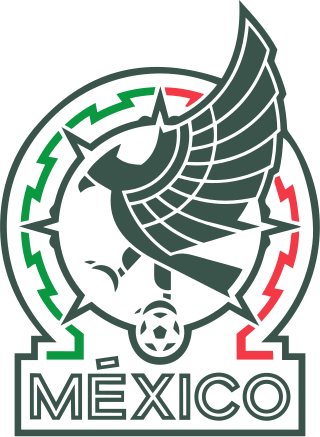
The Mexico national football team represents Mexico in international football and is governed by the Mexican Football Federation. It competes as a member of CONCACAF.
The qualification competition for the 1990 FIFA World Cup was a series of tournaments organised by the six FIFA confederations. Each confederation — the Asian Football Confederation (AFC), Confederation of African Football (CAF), CONCACAF, CONMEBOL, Oceania Football Confederation (OFC), and UEFA (Europe) — was allocated a certain number of the 24 places at the tournament. A total of 116 teams entered the competition, with Italy, as the host, and Argentina, as the holders, qualifying for the final tournament automatically.
The 1994 FIFA World Cup qualification was a series of tournaments organised by the six FIFA confederations. The 1994 FIFA World Cup featured 24 teams with one place reserved for the host nation, United States, and one place for the defending champions, Germany. The remaining 22 places were determined by a qualification process, in which 147 teams, from the six FIFA confederations, competed. Most of the successful teams were determined within these confederations, with a limited number of inter-confederation play-offs occurring at the end of the process.
Qualifying for the 2010 FIFA World Cup was a series of tournaments organised by the six FIFA confederations. Each confederation – the AFC (Asia), CAF (Africa), CONCACAF, CONMEBOL, OFC (Oceania), and UEFA (Europe) – was allocated a certain number of the 32 places at the tournament. A total of 205 teams entered the qualification competition, with South Africa, as the host, qualifying for the World Cup automatically. The first qualification matches were played on 25 August 2007 and qualification concluded on 18 November 2009. Overall, 2,338 goals were scored over 852 matches, scoring on average 2.74 per match.

The 2007 FIFA Beach Soccer World Cup was the third edition of the FIFA Beach Soccer World Cup, governed by FIFA. Overall, this was the 13th edition of a world cup in beach soccer since the establishment of the Beach Soccer World Championships which ran from 1995 to 2004 but was not governed by FIFA. It took place in Rio de Janeiro, Brazil, from 2–11 November 2007.
The United States men's national beach soccer team represents the United States in international beach soccer competitions and is controlled by the USSF, the governing body for soccer in the United States.
The 2014 FIFA World Cup qualification was a series of tournaments organised by the six FIFA confederations. The 2014 FIFA World Cup featured 32 teams, with one place reserved for the host nation, Brazil. The remaining 31 places were determined by a qualification process, in which the other 207 teams, from the six FIFA confederations, competed. Most of the successful teams were determined within these confederations, with a limited number of inter-confederation play-offs occurring at the end of the process.

The 2011 FIFA Beach Soccer World Cup was the sixth edition of the FIFA Beach Soccer World Cup, governed by FIFA. Overall, this was the 16th edition of a world cup in beach soccer since the establishment of the Beach Soccer World Championships which ran from 1995–2004 but was not governed by FIFA. It took place at the Stadio del Mare, a temporary stadium at the Marina di Ravenna in Ravenna, Italy, the third tournament to take place outside Brazil, which started on September 1 and ended on September 11, 2011. However this was the first tournament to take place under the new two year basis; now the FIFA Beach Soccer World Cup takes place once every two years. The tournament was confirmed in March 2010.
The 2005 CONCACAF and CONMEBOL Beach Soccer Championship, also known as the 2005 FIFA Beach Soccer World Cup qualifiers for (CONCACAF and CONMEBOL), was the first beach soccer championship for the Americas, held in March 2005, in Rio de Janeiro, Brazil. Hosts Brazil won the championship, beating Uruguay in the final, whilst the United States beat Argentina in the third place play off to finish third and fourth respectively. These nations moved on to play in the 2005 FIFA Beach Soccer World Cup in Rio de Janeiro from 8 May to 15 May.

The CONCACAF Beach Soccer Championship is the main championship for beach soccer in North America, Central America and the Caribbean, contested between senior men's national teams of the members of CONCACAF. It is the sport's version of the better known CONCACAF Gold Cup in association football. North America's governing body for football, CONCACAF, organize the championship, with cooperation from Beach Soccer Worldwide (BSWW).
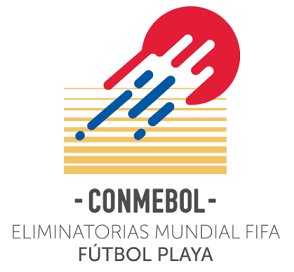
The CONMEBOL qualifiers for the FIFA Beach Soccer World Cup, previously known as the South American Beach Soccer Championship, was the main championship for beach soccer in South America, contested between the senior men's national teams of the members of CONMEBOL.

The Copa América Centenario was an international men's soccer tournament that was hosted by the United States in 2016. The competition was a celebration of the centennial of CONMEBOL and the Copa América, and was the first Copa América hosted outside South America.
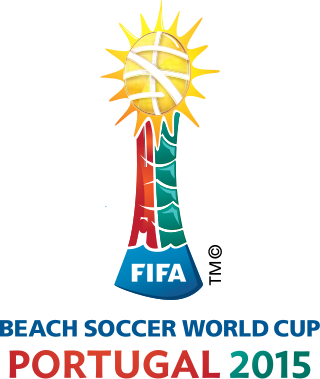
The 2015 FIFA Beach Soccer World Cup was the eighth edition of the FIFA Beach Soccer World Cup, the premier international beach soccer competition for men's national teams, which has been organized by FIFA since 2005. Overall, this was the 18th edition of a world cup in beach soccer since the establishment of the Beach Soccer World Championships which ran from 1995 to 2004 but was not governed by FIFA. It was also the third edition to take place under the biennial system introduced in 2009.
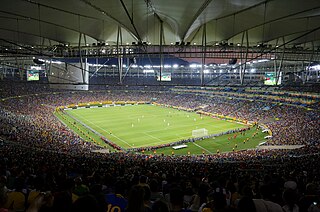
Football is considered one of the greatest sports in South America. Football was first introduced to the continent during the nineteenth century, as part of the worldwide diffusion of British culture initiated by the British diaspora and subsequent acceptance of the sport by the region's Anglophile elite. Football was widely regarded as a symbol of modernity and good health, and over time it replaced older fashionable sports, such as Bochas. By the middle of the twentieth century, it had become the primary mainstream sport across most of the continent.
The following were the events of association football for the year 2019 throughout the world.











